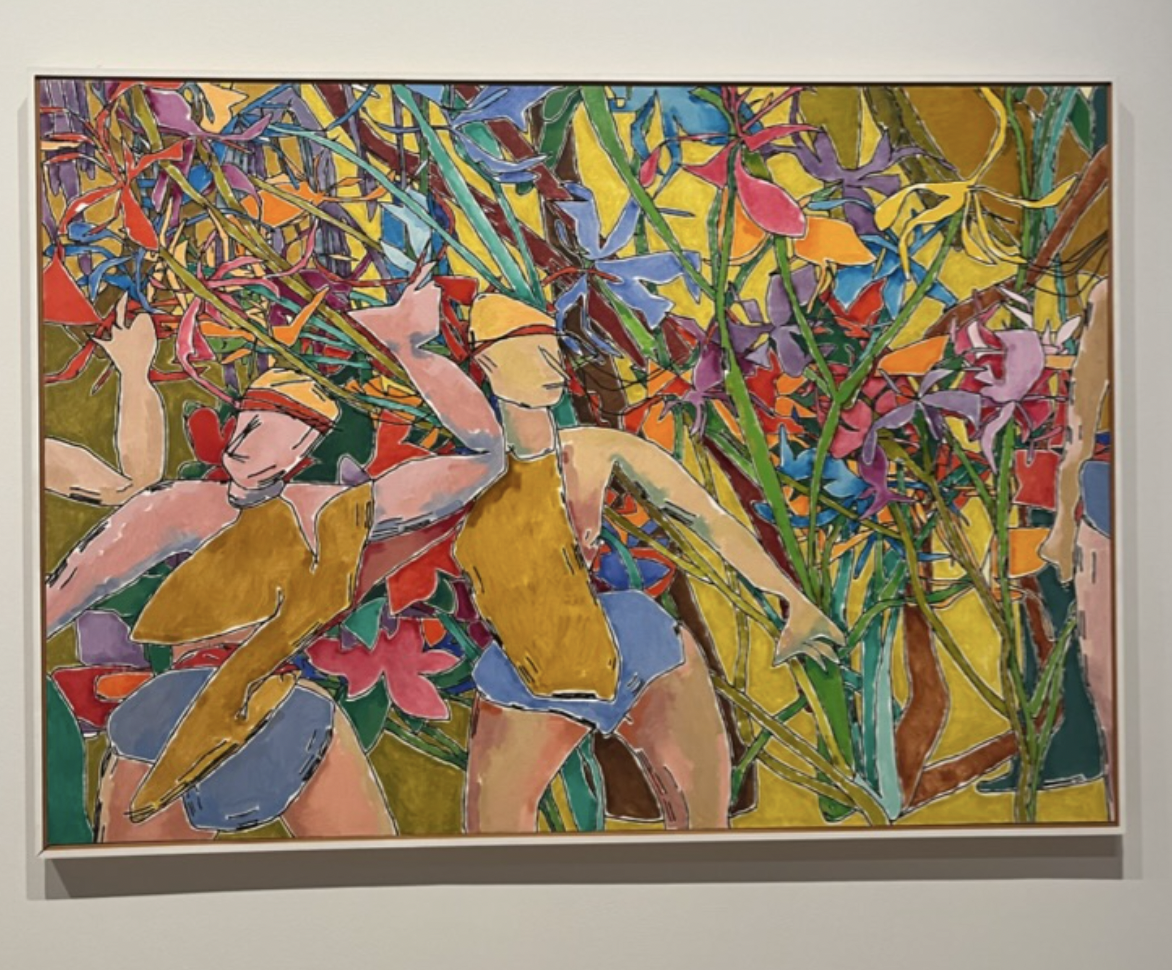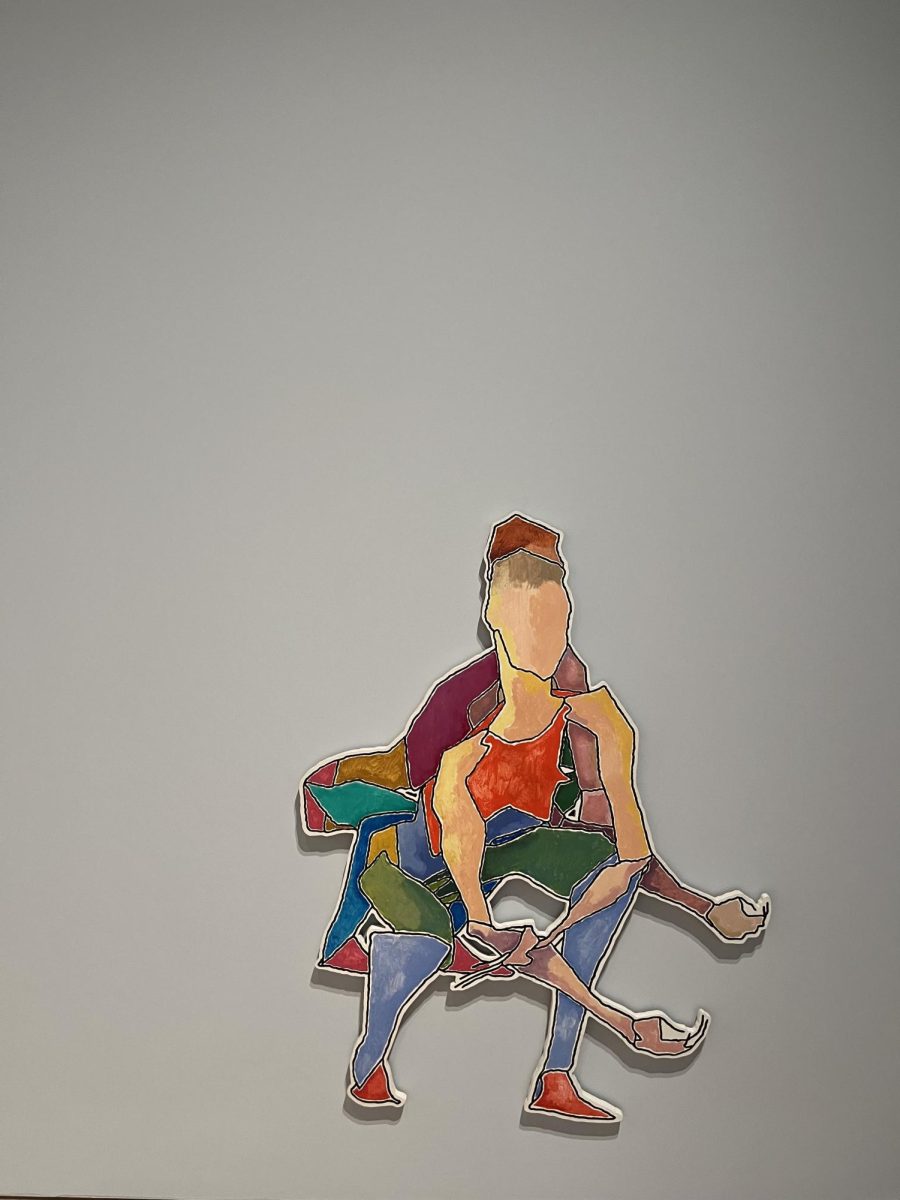“In a bustling digital age where artificial intelligence redefines creativity, the Whitney Biennial’s latest exhibition, ‘Even Better Than the Real Thing,’ casts a spotlight on the evolving tapestry of art, challenging the very essence of artistic authenticity. Imagine stepping into a gallery where vibrant, textured paintings blur the line between human and machine creativity. Here, AARON, an AI artist born in the 1960s by Harold Cohen, showcases its evolutionary journey from Cubist-like abstracts to lush, expressionistic landscapes. While these pieces dazzle the eyes, the revelation of their AI origins often leaves viewers grappling with a sense of loss — art’s human touch seemingly dissolved into bytes and code. As AARON’s brush strokes challenge our traditional perceptions, one is left to ponder: does the soul of art lie in its creator, or can machines birth beauty just as profound?”
To prove this article’s point, I asked ChatGPT to summarize the finished product of my article. It generated the five-sentence description above. I am left thinking that the age-old sci-fi movie plot is coming true. And soon. Robots may be able to do everything humans can, and maybe even better.
Aside from A.I.’s well-known uses in chatbots, prediction tools, and education, A.I. has been emerging in the artistic world for decades. When people think of the uses of A.I. in art, their minds automatically jump to images generated by ChatGPT. These images – usually cartoonish, vibrant, and lacking texture – can easily be identified as A.I. generated. “The real thing is better than this garbage!” I say to myself when attempting to generate images of landscapes or political figures. But what if the real thing isn’t better? That is the question being asked by the Whitney Biennial – the longest-running survey of contemporary art in the United States. It is currently on view through August 11th, 2024.
The title, “Even Better Than the Real Thing” reflects the fact that A.I. is changing our perception of what is real, what is human, and what is machine.
The truth is, even if we can identify some of the images generated by A.I., many go undetected with the assumption that any painting or drawing with texture must be man-made. The idea that we may not be able to identify something as A.I. is something we haven’t adjusted to yet. While we have begun to recognize the eerie language and visual patterns of ChatGPT, many other forms of A.I. go unchecked and unnoticed.
While The 2024 Whitney Biennial chose to acknowledge artists who have been overlooked and undervalued, the idea that A.I. can replace artistic thought is looming in the background. Visual artists may have to go through a similar battle as writers did during the 2023 Writers Guild of America strike. The concepts of stolen intellectual property and new competition are something artists will have to grapple with as A.I. becomes more and more commonplace. However, some artists – game changers and challengers – have chosen to take A.I. and attempt to use it to their advantage.
Going hand in hand with the biennial, the Whitney museum chose to showcase Harold Cohen’s AARON, the first A.I. for art-making that was successfully developed to have the same artistic capabilities as a human. AARON KCAT was produced and released with computer scientist Ravmond Kurzweil in 2001. The A.I. reflects Cohen’s efforts to make beautiful and original art available at a low price. This exhibit is currently on view through May 19th, 2024.
Many people believe that the development of A.I. kicked off in recent years with the launch of ChatGPT and other chatbots. However, the creation and development of various A.I.s began in the 1950s and 1960s, when people first began to translate their ideas into code and feed them into a machine. To my surprise, one of the first works of A.I. software created was actually for artistic purposes.
In the early 1960s, artist Harold Cohen first created AARON. Cohen understood his work with AARON to be a collaboration instead of a human commanding a machine.
Cohen spent his entire lifetime translating the knowledge that he possessed as an artist and transferred it into code. As AARON slowly transformed from a database of knowledge into an intelligent entity, it began to create images for painting, and drawing devices to execute. Aside from the AI itself, Cohen built his own plotters and painting machines that interpreted the demands made by AARON. These machines explain why the painting and drawings that AARON creates have excessive amounts of texture.
AARON’s human name stems from this very principle. The idea that a machine itself is an artist and that Cohen himself is just the puppeteer models this statement. According to the Whitney Museum of American Art, “The title [AARON] alludes to the Biblical figure anointed as speaker for his brother Moses, and questions how artistic creation is often glorified as a form of communication with the divine.”
AARON’s paintings and digital art showcased in this exhibit tend to reflect these very ideals. The works showcased in Harold Cohen’s AARON are full of life – colorful, vibrant, and abstract.
AARON’s earlier works are a combination of rocks, flowers, and abstract human-like figures. These works almost look like they were made during the Cubist era, with the size and shape of human limbs looking asymmetrical and disproportionate to life-like human features. The earlier works also incorporate many different colors, all contrasted by clear lines.
However, AARON’s later works explore jungle-like environments with layered foliage and nuanced landscapes in addition to more life-like images of humans. Oddly enough AARON has no stored descriptions of particular flowers and plants but generates images from codes about their size, branching levels, and patterns of leaf formation, explaining why each plant has a similar look to it.
AARON’s shift from abstraction to figuration throughout its “career” as an artist represents a technical change, demonstrating how the A.I. is growing and developing as artistic movements around the world grow and develop with it. However, it also displays a conceptual change. As the knowledge of artists such as Paul Cézanne were coded into AARON’s database, AARON learned how to harmonize landscapes with the trees and as patterns on human skin and the art created suddenly changed from looking Cubist to Expressionist.
Looking at these paintings, one would never know they were painted by an A.I.. I entered the exhibition in awe of the beauty, colors, brushstrokes, shapes, and textures of the paintings, only to leave feeling like the works were cold, heartless, and almost empty-looking. The second we learn that a piece of work, either literature or visual art, was not created by a human, it loses all of its humanity. The joy of art comes from the fact that humans were innovative enough to uncover and explore new and different ideas, break boundaries, and venture off into the unknown. Art is supposed to be brave, daring, and new. The second the courage behind the creation of art is taken away, the works merely become randomly placed colors and shapes on a canvas, with no heart or soul. While a fascinating way to explore new technology, the fact of the matter is, I only want art created by a human hanging in my living room.
The joy of art comes from the fact that humans were innovative enough to uncover and explore new and different ideas, break boundaries, and venture off into the unknown.


